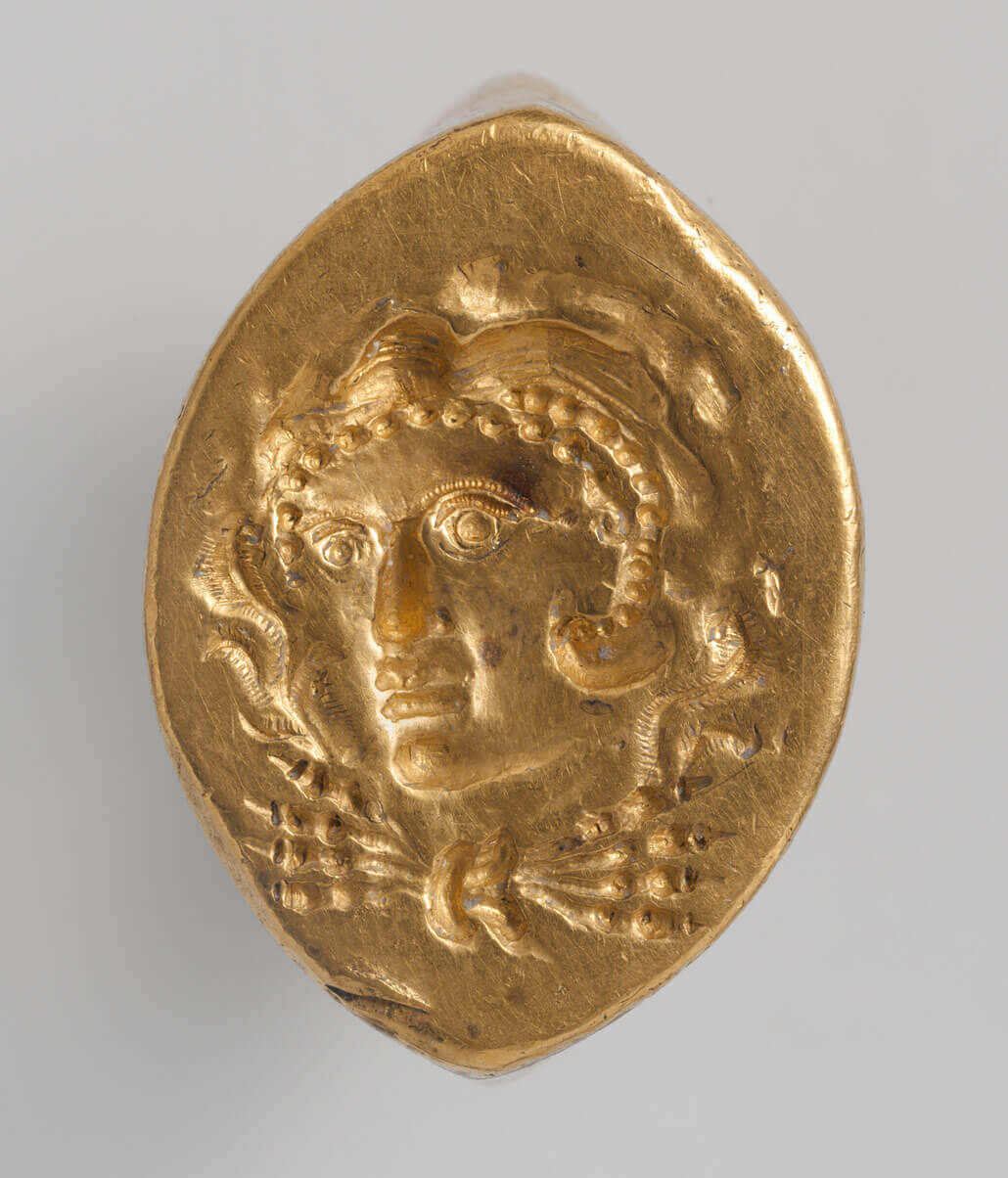Gold sure gets around. Around the world, that is. Her relationship with ancient civilizations is as illustrious as her patina and as fascinating as any good gossip! But the proof is in the pudding. Gold’s lasting power is the stuff of legends.
From ancient Egyptian gold devotees to the infamous Shang Dynasty rulers in Bronze Age China, gold has been worshipped across the globe for many millennia. Founded by Tang of Shang (no, we’re not joking), the Shang Dynasty began rule around 1766 BCE. As intellectual and illustrious as this society was (they made many progressive discoveries and developments), the Shang culture indulged in practices of shamanism and human and animal sacrifice. Eeek.

Gold Mask, Late Shang Dynasty, 1100 BCE
While Jade and bronze ranked highly in Shang society, gold played an important role. Goldsmiths serving the Shang Dynasty used gold for surface decoration, often coating bronze artifacts in a thin layer of pure gold. They also used gold coins for currency.
Thousands of years later (2001 to be precise), the incredible riches of the Shang Dynasty were uncovered in Chengdu (in the Sichuan Province of China), revealing one of the most significant archaeological ruin sites of this century. Branded by the location and its proximity to the Jinsha River, the Jinsha site contains relics and burial grounds of over 100 tombs and 10,000 objects, including primitive artifacts cast and created in solid gold or gold foil. This massive excavation site is now a museum and major tourist attraction in China, and presents a fascinating look into this ancient civilization and their particular proclivities.

Sun and Immortal Bird Gold Foil Object, Late Shang Dynasty, 1100 BCE
While the Shang Dynasty merely scratched the surface of gold use, the ancient Greeks adored gold and used it for many forms of creative expression and physical decoration, and of course, retaining wealth. Gold is used in Greece began around 1600 BCE, but it wasn’t until Alexander the Great arrived on the scene hundreds of years later, did they up the ante on gold.
During the Hellenistic Age, ‘Great Al’ conquered the East and captured the infamous Babylon treasure. As a result, large sums of gold became available to Greek society, which increased desire for gold products, particularly gold jewelry. Everything from earrings, necklaces, wreaths, diadems, and thigh bands were worn. The ancient Grecians loved matching sets (and why not, we do too!) and gold jewels that were adorned with inlaid gems.

Pair of Hellenistic serpentine armbands, 200 BCE.
Creativity during this period flourished, and craftsmen created pieces that were rich with symbolism, ornamenting jewels with gods, goddesses, plants, and animals. The ancient Grecians practically wrote the book on accessorizing with gold jewelry.

Gold Intaglio ring of Alexander the Great, late 4th-3rd Century BCE.
It is worth noting, however, that their next-level gold worship led to the legend of King Midas who turned everything he touched into gold. The myth revealed that the golden touch turned out to be as much a curse as a super-power. As the adage goes, ‘be careful what you wish for.’

Gold earrings with Trojan prince Ganymede drops, 330-300 BCE.

Pair of gold & rock crystal rams’-head bracelets, 330-300 BCE.
Even though the Romans conquered Greece in 146 BCE, they apparently loved Grecian style so much that they continued to utilize the Greeks’ artisanal craftsmanship as they had a unique style that depicted subjects of portraiture through painting, sculpture and jewelry design in a god-like fashion. Luckily for them, the Romans couldn’t get enough of it.
Gold rings were at the top of the list for both men and women of status. The bigger, the better. For some time, men were discouraged from wearing any type of jewelry other than rings. Thankfully, the ladies were freer to accessorize as they wished.

Gold Roman snake ring, c. 1st century BCE.
Around 44 BCE, the Romans began using gold coins as currency. They used gold coinage not only for purchasing power, but also for political purposes by stamping all the coins in the empire with the face of the ruler of the time. Clearly understanding the concept that money is power, Julius Cesar started this trend, which subsequent Roman rulers would happily continue. Oddly enough, after a while Romans actually started to believe that the coins possessed the characteristics of the individual it featured, emphasizing the rather dicey concept of money possessing power beyond the purse.

Gold Roman coin of Julius Caesar, 46 BCE.
As ancient as the universe, Gold has held many a civilization captive to her undeniable charms. Mythical, precious and transformative, Gold is a fascinating mistress with a history born from the very heavens above. Join us in our upcoming chapters as we journey along her gilded path, across this golden globe.


















